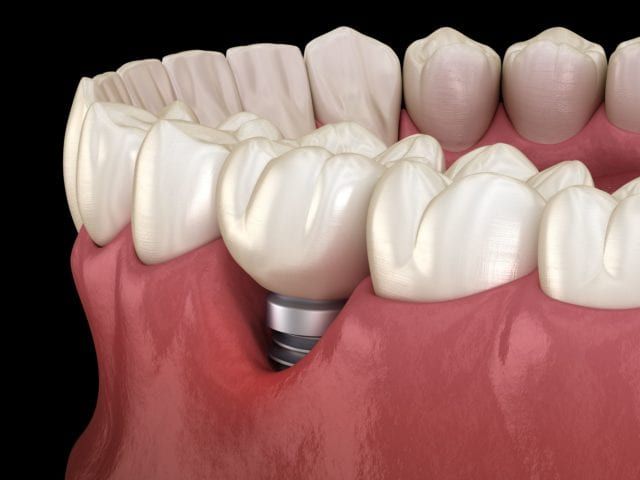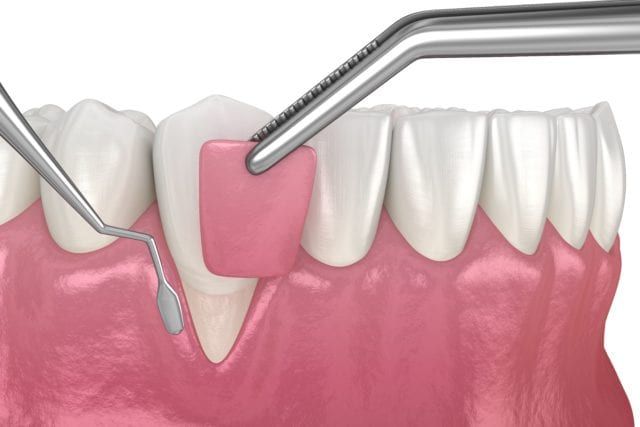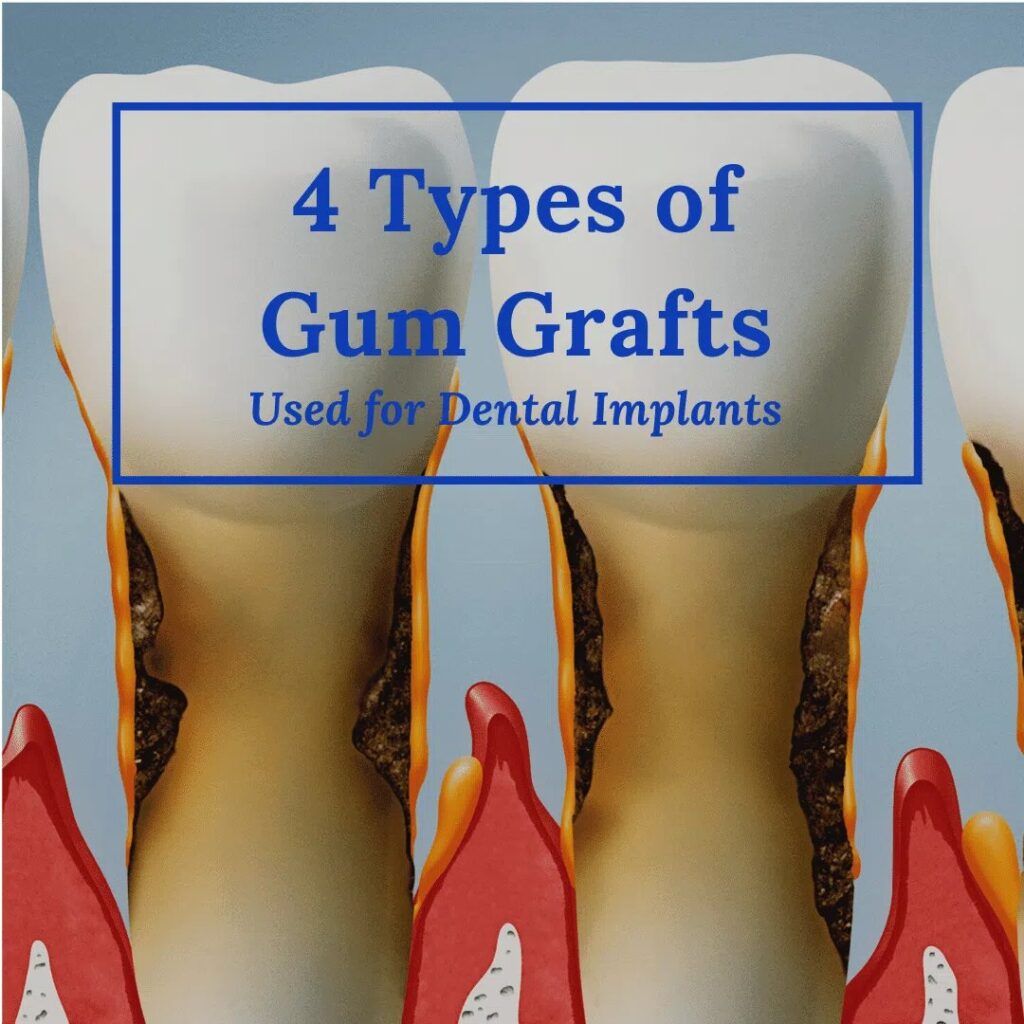The leading cause of tooth loss in adults is severe gum disease, also known as advanced periodontitis. This is because inflammation in the gums causes the gums to pull away from the tooth roots, which allows more bacteria to accumulate in the periodontal pockets. Eventually, the bacteria invade the jawbone and other supporting tissues, causing them to deteriorate. Without healthy supportive tissues, the teeth become loose and will eventually fall out.

Although dental implants are a common tooth replacement option, it is also important to note that good candidates for dental implants have mostly healthy gums. After all, without healthy gums, there is a good chance of implant failure. For those that are looking into dental implants to replace teeth that were lost from periodontitis, this can be a problem.
Luckily, however, it is not a permanent problem. Nor does it need to inhibit your ability to get dental implants. With that being said, having less than healthy gums, could require additional procedures to ensure that you have the best treatment outcome. One procedure that may need to be completed before your implant surgery is a gum graft. You may need a gum graft if you have severely recessed gums.
A gum graft helps to promote the growth of new gum tissue so that you have enough gum tissue to completely cover the base of a dental implant. Depending on your treatment plan, gum grafts can be performed either directly after an extraction, during the implant surgery, or following implant surgery. There are also four different types of gum grafts that your implant dentist may recommend, including:
Connective Tissue Grafts
Connective tissue grafts are the most commonly performed type of gum graft. With a connective tissue graft, a small pouch is formed in the existing gum tissue. Then, a small flap incision is made in the roof of the mouth and a thin layer of connective tissue is then removed. This thin layer of connective tissue is then placed in the pouch and the flap on the roof of the mouth is stitched down. The graft will heal as the new tissue receives nutrients from the pouch and the new tissue will grow over the exposed tooth root. This type of gum graft is often used when gum recession has exposed the tooth roots and there is not enough surrounding gum tissue to perform a successful graft.

Free Soft Tissue Autogenous Graft
Free soft tissue autogenous grafts are very similar to connective tissue grafts. Just as with a connective tissue graft, a small pouch is formed in the existing gum tissue. However, the main difference is that with a soft tissue graft, the tissue is taken directly from the roof of the mouth instead of from underneath the flap. This tissue is then grafted into the pouch at the base of the tooth root. Free soft tissue autogenous grafts are often used in patients who have thin gums and can benefit from the extra tissue.
Double Papilla Subepithelial Graft
Double papilla subepithelial grafts are named as such because they involve making an incision of the healthy papilla on either side of the affected tooth and then slightly lifting the papilla. A flap incision is also made in the roof of the mouth in order to harvest a layer of connective tissue. This connective tissue will be placed beside the tooth just under the raised papilla. The papilla on either side of the tooth will be connected with a single suture to cover the tooth root and exposed bone. Double papilla subepithelial grafts are performed when there is no gum tissue attached to the tooth root, however there is healthy gum tissue around the surrounding teeth.
Pedicle Graft
Pedicle grafts are performed by partially detaching the gum tissue above or below the tooth and then pulling it over the exposed tooth root. The tissue will then be sutured so that it remains in place. Although the tissue will be stretched at first, it will eventually regain normal density as the graft heals. Pedicle grafts are often used when there is adequate, healthy gum tissue around the surrounding teeth.
As you can see, there are different types of gum grafting techniques that can be used to ensure your dental implant has enough supportive gum tissue. In order to know which gum grafting technique is right for you, your implant dentist will need to evaluate your teeth, gums, and implant sites to make the best decision for your oral health needs.

